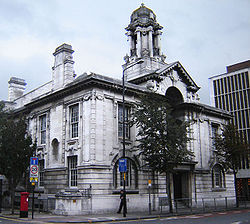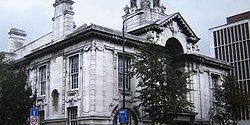Transfer from Bethnal Green (E2) to Heathrow Airport
 East London 2 is the same with the Bethnal Green district, historically an agrarian hamlet of Middlesex, in the ancient parish of Stepney. Because of the great increase in population the area witnessed in the 17th century, it was forced to a split and became the parish of Bethnal Green. In the 18th century Bethnal Green became part of the Metropolis and the County of London. After 1900 when the district became a metropolitan borough to 1981, the region went to a period of steady decline.
East London 2 is the same with the Bethnal Green district, historically an agrarian hamlet of Middlesex, in the ancient parish of Stepney. Because of the great increase in population the area witnessed in the 17th century, it was forced to a split and became the parish of Bethnal Green. In the 18th century Bethnal Green became part of the Metropolis and the County of London. After 1900 when the district became a metropolitan borough to 1981, the region went to a period of steady decline.
Haggerston and Cambridge Heath are also part of the Bethnal Green district. The area is first time mentioned in a Tudor ballad called the Blind Beggar of Bethnal Green. The ballad is in fact a story of a poor man offered a very generous trousseau for his daughter’s wedding. The legend points Henry as the beggar, the son of Simon the Montfort. The legend is not to be trusted as its author affirms. The story of the beggar left more than one mark as one of the most reputed buildings in the area is The Blind Beggar public house in Whitechapel.
One more feature in great association with Bethnal Green is boxing, through the person of Daniel Mendoza that lived in the region for 30 years. He was one of England’s boxing champions between 1792 and 1795. Another area of significance in Bethnal Green is Globe Town, known by most people for the four globe sculptures, each situated in a different corner of the town. The construction of Globe Town was needed because of the expanding population in Bethnal Green in the beginning of the 18th century. The main reason for this expansion was the profitable silk industry in the region which declined after 1830. Even under this terms, the town continued to expand until 1860.
During WWII 21,700 houses were destroyed by 80 tons of bombs, making a great part of the area uninhabitable. A rare thing in England is to meet a town of Viking origin but, as weird as it would seem, Bethnal Green does include one on its list. Neighbored London Fields, Kingsland Road, Middleton Road and Hackney Road, the town became part of an urban sprawl in the 19th century, when the streets were filled with factories and workers cottages. A 300 year old map shows Haggerston under another name by that time – Agerstone.
Today the area is habited mostly by students and workers in the creative businesses, the existence of Hoxton and Shoreditch in Haggerston making the region more popular and also more expensive. This has also driven commercial art galleries to the small town. Alfred Cross and Erno Goldfinger were the designers of the most important buildings in the area, Grade II listed. While Alfred Cross was the genius behind Haggerston Pool, Erno Goldfinger built Haggerston School in a modernist way.
Some other places of note in Haggerston are Regents Canal, Haggerston Park and Hackney City Farm. If you are a fan of clowns or you just want to take your kinds to a great show, you can visit All Saints Centre in Haggerston which holds an annual “Clowns service” to commemorate Joseph Grimaldi. Among the old buildings of Haggerston, between Bethnal Green and its smaller villages that form it, you can find Cambridge Heath, an area in the London Borough of Tower Hamlets. The main building in Cambridge Heath is The Wessex Center.
It is easy to find transport in Bethnal Green as the area has three tube stations: Whitechapel, Bethnal Green and Stepney Green. There are also two local mainline stations in the region: Cambridge Heath railway station and Bethnal Green railway station.
Hotels in Bethnal Green, E2 district:
- 1. Town Hall Hotel&Apartaments – 5*
- 2. Tower Hill Apartaments – 4*
- 3. The Chamberlain – 4*
- 4. The RE London Shoreditch – 4*
- 5. London Marriott Hotel West India Quay – 5*
Image: Wikipedia.

